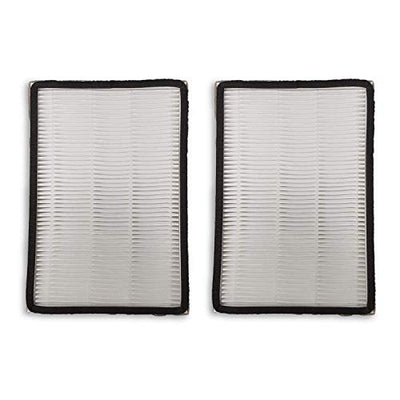The What’s What of Central Vacuum Systems
While some might find enjoyment in them, the vast majority of us absolutely loathe chores. They take time and energy that could be better spent elsewhere, and they overall just aren’t particularly fun. However, they’re essential to keeping our homes neat and tidy – and vacuuming is one of the most important among them.
Although, if you truly hate vacuuming with a passion, there are ways to make the responsibility at least a little quicker and less painful. Getting a central vacuum system is one of them. Haven’t heard about the term? Keep reading to learn what it is and if it’s something that might benefit you.

What is a Central Vacuum System?
So, what exactly is a central vacuum system? Well, a central vacuum system (also called a whole-home vacuum) is a built-in system that uses a network of pipes within interior walls to take care of your cleaning needs. Of course, you’ve still got to do the work, but this significantly cuts down on some of the work, frustration, and noise of it all.
Rather than having to wheel around a clunky vacuum or use a light but ineffective cordless option, all you have to do with this central system is connect a hose through suction ports that resemble electrical outlets. You can then clean more effectively without having to haul something heavy around throughout the house. Pretty cool, right? It is – and it brings several benefits along with its use.
One major thing to consider is that this type of system isn’t inexpensive. It’s quite costly at around $1500 and up, depending on the size of your home, the number of wanted ports, and more. Remember, though, vacuums don’t come cheap. And if you’re a vacuum-killer (like many of us), replacements add up fast over the years.
Central systems, meanwhile, can last upwards of 30-40 years and all without needing particularly serious maintenance. The result? Increased savings over time and less headaches for yourself. This still doesn’t change the fact that the cost makes the system inaccessible for many, but it is something to keep in mind. If you have the money and are looking to make a good investment, it might be worth the upfront charges.
How Does It All Work?
This idea of central vacuum systems tends to be intriguing for most, but it’s crucial to know how they work before making the expensive plunge. Essentially, the system is comprised of four main components: the main vacuum unit, pipes and inlets, a vacuum hose, and cleaning tools.
The vacuum hose and cleaning tools are what you – the consumer – will most directly interact with. They’re pretty familiar and work just as they would on any vacuum cleaner. The only real difference is that they’re connected to specialized ports in the wall, and you might even have extra options that you wouldn’t get with traditional vacuums like retractable hoses, specialized lengths, or the like. As these tools help suck up the dust, pet hair, dirt, and other debris, everything travels through the system’s pipes and to the main vacuum unit.
Functioning as the central power unit, this is where all the impressive stuff happens. It makes use of a powerful motor, providing the strong suctioning and cleaning powers needed for the other components to do their job. As debris is pulled from the floor and through the pipes, it eventually makes its way to this unit and is pulled neatly into either a disposable or temporary filter.
Since this happens in a sealed container and in a remote location of the home, no dust can escape, and your air is kept much cleaner. Bonus: the aforementioned filter typically only needs to be replaced every few months or every year, meaning no more daily or weekly emptying. No fuss necessary with little maintenance required.

How to Know It’s Right for You
Now that you understand the basics a bit better and have a general idea on how the system works, there’s one major question left unanswered. How do you know it’s right for you? The easiest way to figure it out is to become aware of its biggest pros/cons and examine them alongside your needs. To make this simpler, here is a brief breakdown on both the system’s more impressive strengths and some of its weaker points.
The Pros
- Ease of access and use – With no cords or bulk to navigate, and with plenty of ports and hose lengths to choose from, using a central vacuuming system is a breeze. No more tripping or inaccessible spots!
- Good for allergies/asthma – The problem with many vacuum cleaners these days is that they’re bagless. Bagless cleaners mean dirt is emptied straight from a chamber rather than a sealed bag, leading to kickback re-entering the air. Central systems don’t have this issue, which is great for people with allergies, asthma, or any other medical condition that necessitates good, clear air.
- More effective than conventional cleaners – Conventional cleaners (even the expensive ones!) aren’t always the most efficient at what they do. Rollers tend to just beat dirt right back into the floor and there’s generally a significant amount of pet hair, dust, and other debris left behind. Central systems use stronger motors and suction for a more effective, deeper clean.
The Cons
- Price – As we’ve mentioned before, the costs of these systems leave something to be desired. In complete honesty, they’re outrageously expensive for those of us who don’t have much money left at the end of the week or month. Unfortunately, that means the majority of people won’t be able to even consider this as a feasible option.
- Not suited for apartments or small houses – Apartments and small homes have their upsides, but they don’t blend well with central vacuum systems because of their set up. That’s not to say they rule them out entirely, but the odds are not in your favor.
ZVac Central Vacuum System with 700 Air watts 26.5 L Tank Capacity Power Unit Vac - Model ZCVS-1 Central Cleaner with Central Vacuum Accessories Kit

ZVac Central Vacuum Installation Kit for All Homes 48 Foot of Pipe with Inlets, couplings, and Elbows

ZVac Installation Kit for All Central Vacuum 68ft Pipe for Nutone, Beam, Eureka, Vacuflo, Vacumaid, Hayden, Broan, Electrolux, Honeywell & More

ZVac Universal Central Vacuum System 2 Inlet Installation Kit Pre-Packaged with Wall Plates, Elbows, Brackets, Couplers, Sweep Ts, Pipe Straps




















